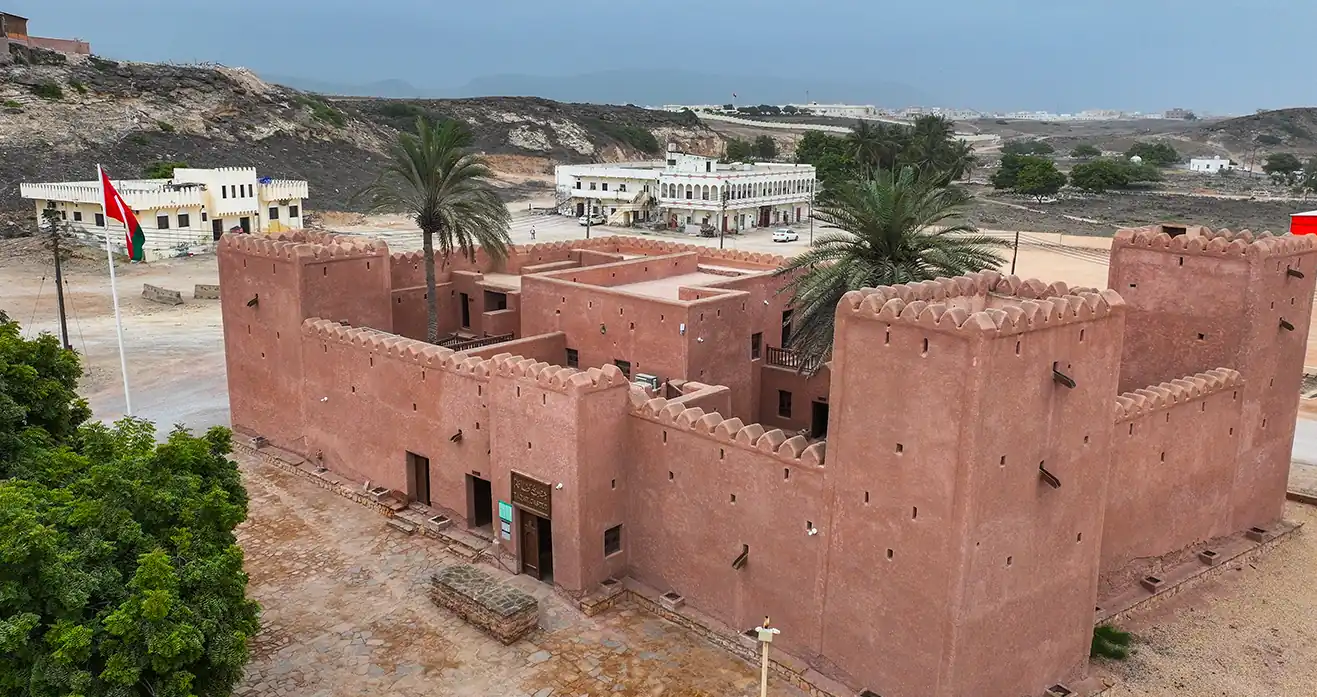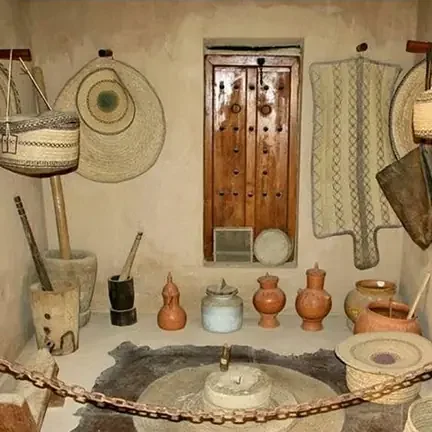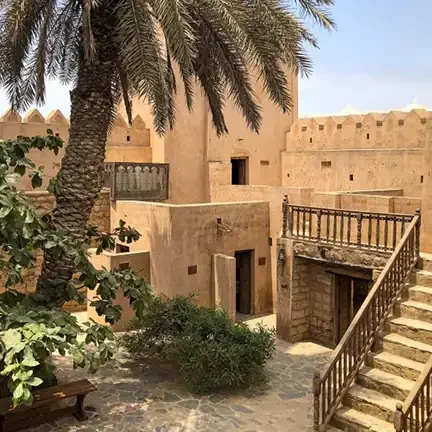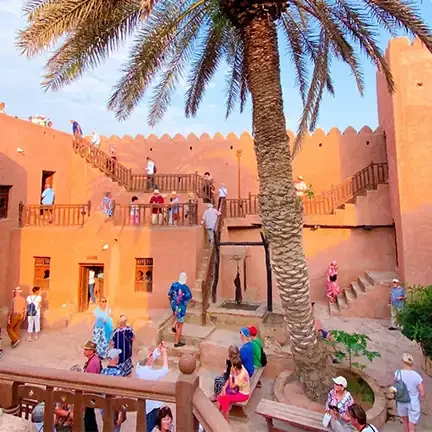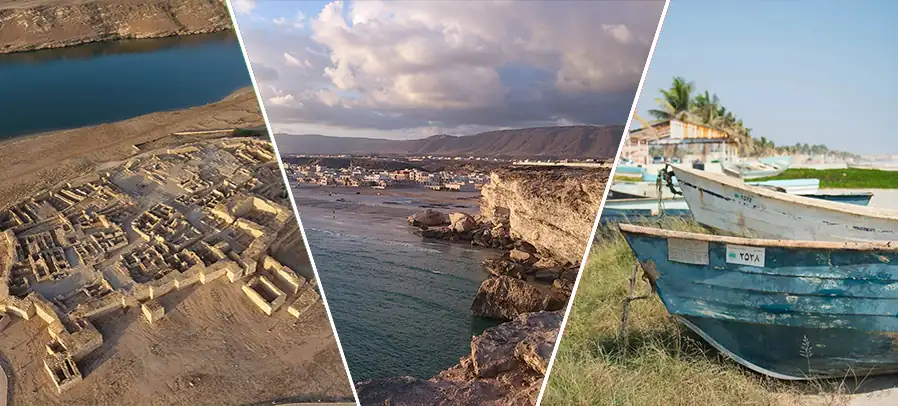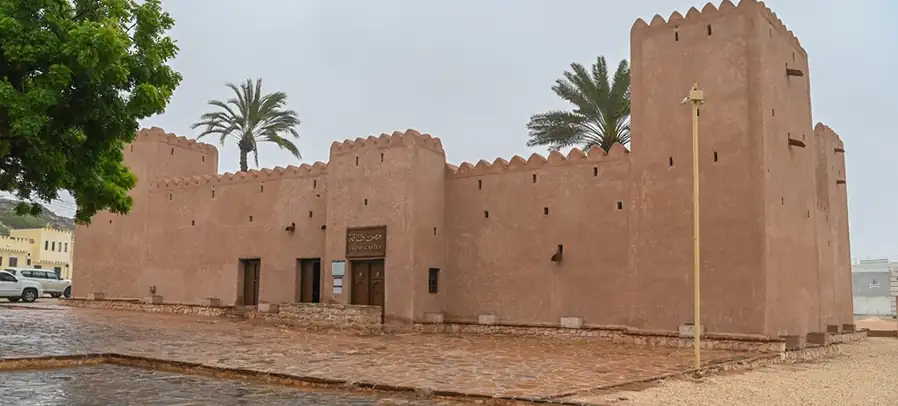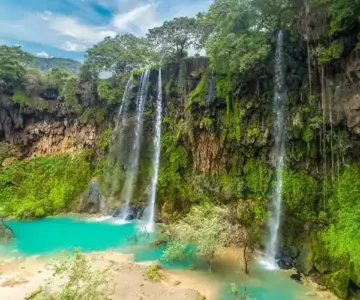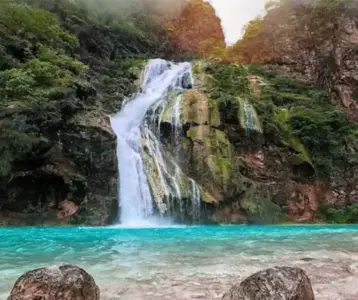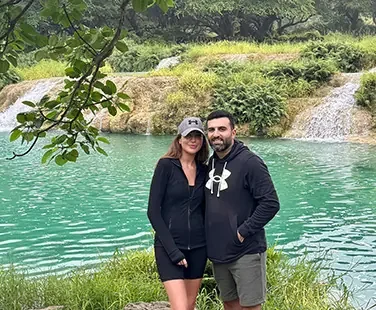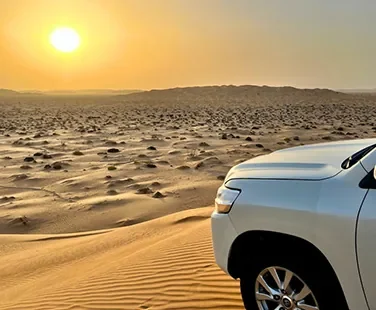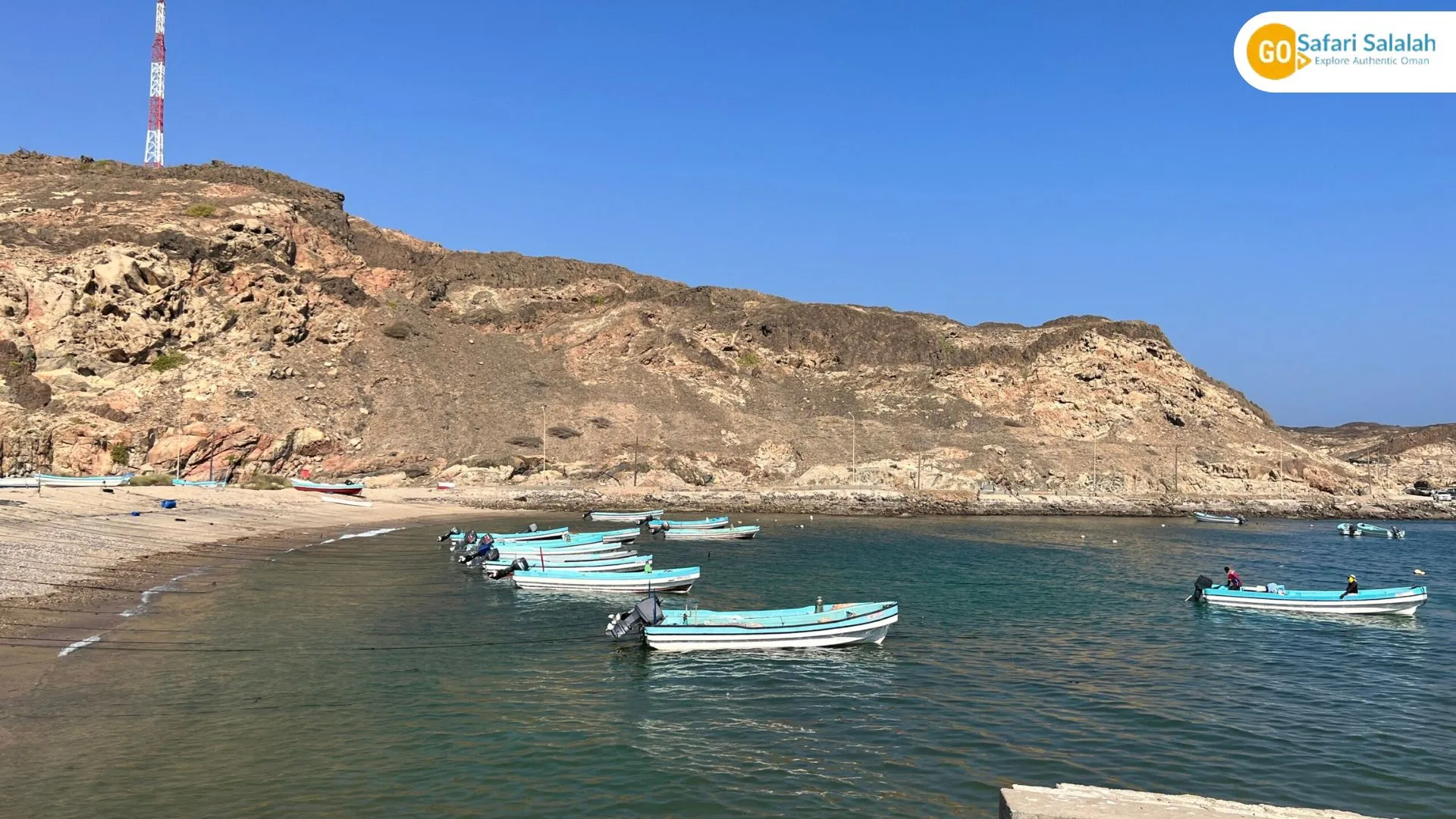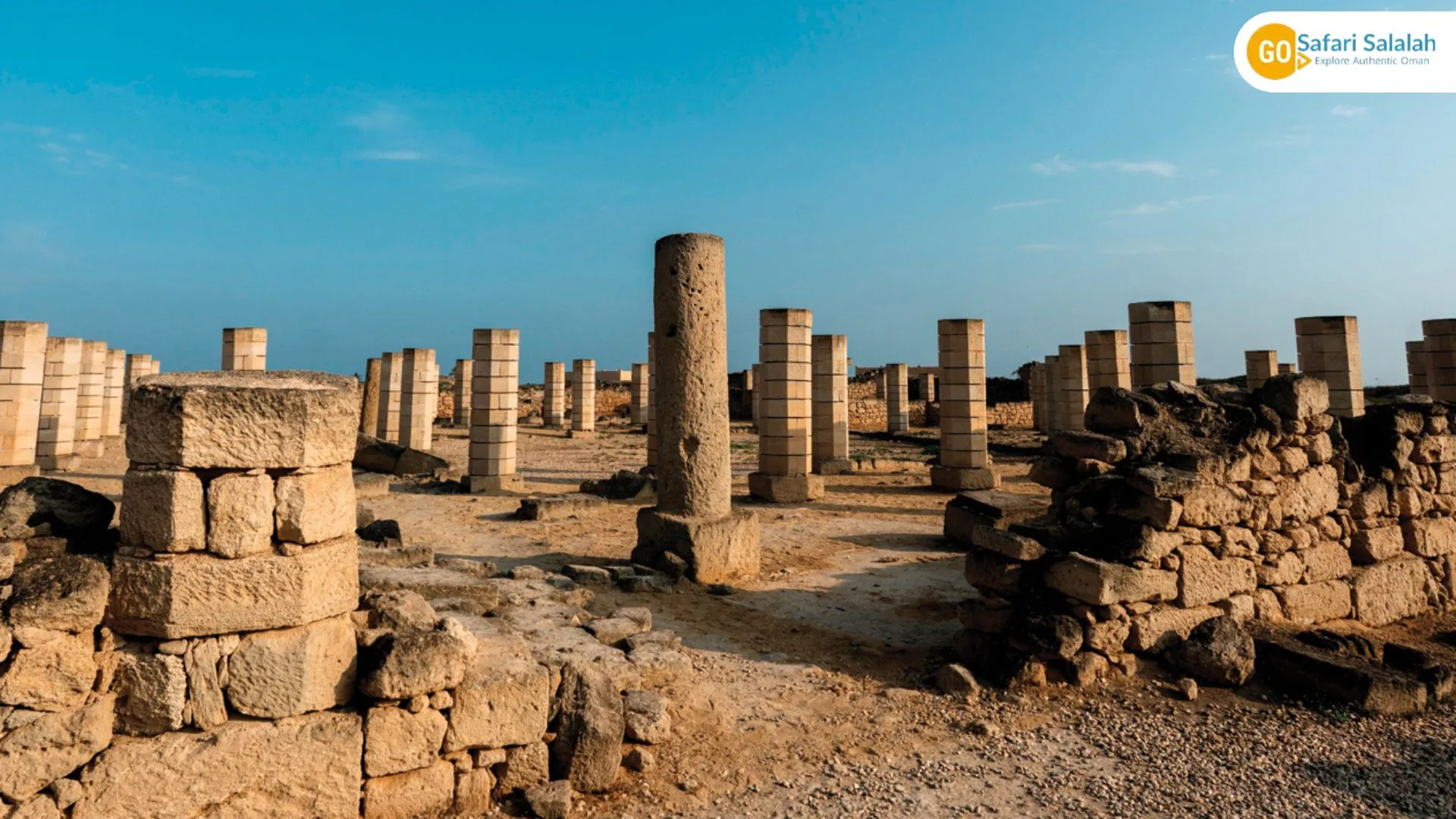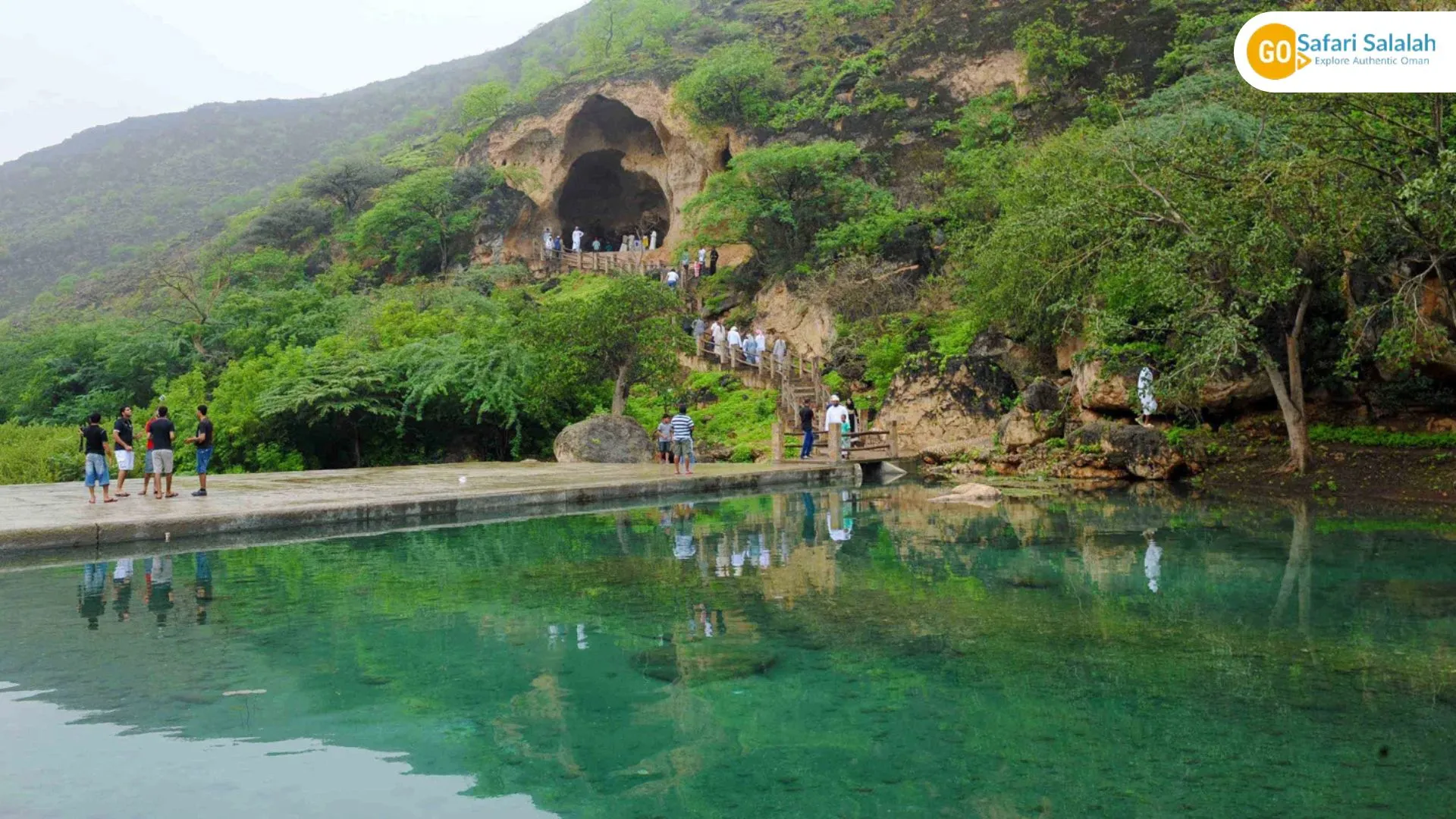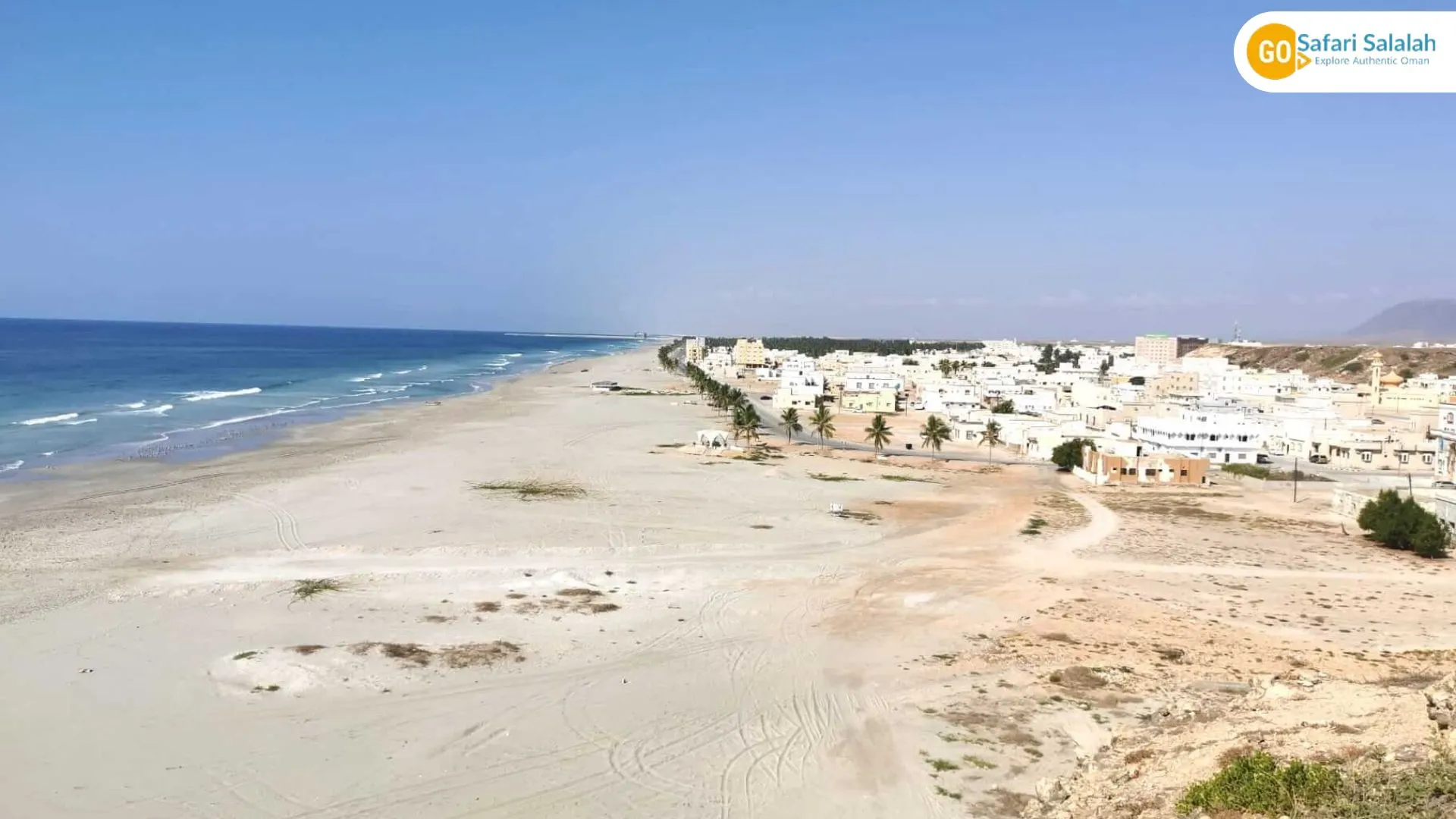History and Architecture of Taqah Castle
A Fortress with a Story:
Built in the 19th century as the private residence of Sheikh Ali bin Taman Al Ma’shani, the grandfather of Sultan Qaboos’ mother, Taqah Castle later became a government property. Today, it is preserved as a museum, allowing visitors to relive the traditions of Oman’s past.
Unique Architectural Features:
Constructed from striking white stone, the castle’s rectangular design includes towers at each corner, once used to protect the town from potential threats. Inside, two floors reveal a fascinating contrast: the ground floor with its prison, guard rooms, and storerooms, while the upper floor showcases family quarters, watchtowers, and gathering spaces.
Exploring the Interior of Taqah Castle Salalah
Ground Floor Highlights:
Step inside the reception hall where local rulers once welcomed guests. Explore guard rooms decorated with antique rifles, a small prison, and traditional household tools. A courtyard garden with its palm tree brings a refreshing balance to the stone architecture.
Family Quarters and Views:
On the first floor, visitors discover the private life of the Wali’s family. Bedrooms still display original furnishings, while corridors once filled with tea gatherings now feature antique crockery. The watchtowers offer panoramic views across the town of Taqah, reminding visitors of the castle’s strategic role.
Watchtowers and Views:
The castle’s towers provide spectacular views of Taqah town and the Arabian Sea. Although the terrace is closed, the balconies and vantage points still give travelers a breathtaking panorama worth capturing.
Planning Your Visit to Taqah Castle Salalah
Located just 30 minutes from Salalah International Airport, Taqah Castle is easy to reach by car, taxi, or even local minibuses. The castle welcomes visitors from Saturday to Thursday (9:00 AM – 4:00 PM), and Friday mornings (8:00 AM – 11:00 AM). Admission fees are modest, making it accessible to all travelers.
Best Time to Visit: The Khareef season (July–September) is ideal, as the Dhofar region transforms into a lush green paradise with cooler temperatures and waterfalls. For a quieter experience, October to June also offers rewarding visits, though expect warmer weather.
Customize your Trip With Go Safari Salalah
Are our Salalah City Tour places not fulfilling enough? Contact us and tailor a city tour to your aspirations and desires.
Nearby Attractions in Taqah Castle
Taqah Beach:
Just a short walk from the castle, Taqah Beach is known for its white sands and turquoise waters. Families can enjoy picnics, children’s play areas, and scenic cliff views, while nature lovers can spot local birdlife.
Fishing Village:
The nearby fishing village reflects Dhofari traditions, with locals still producing dried sardines, a regional specialty. Strolling through its alleys gives visitors an authentic glimpse of Omani coastal life.
Ancient Ruins of Sumhuram:
A short drive away lies Sumhuram (Khor Rori), a UNESCO World Heritage Site once vital to the frankincense trade. Its ruins, overlooking the creek, reveal Oman’s deep historical connections with the ancient incense route.
Why Taqah Castle Should Be on Your Itinerary
Taqah Castle is more than a monument—it’s a window into Oman’s soul. With its fascinating history, striking architecture, and stunning coastal setting, it captures the essence of Dhofar’s heritage. Combined with nearby beaches, fishing villages, and ancient ruins, it makes an unforgettable stop on any trip to Salalah.
Ready to explore? Add Taqah Castle to your Salalah itinerary and experience Oman’s cultural treasures first-hand.

